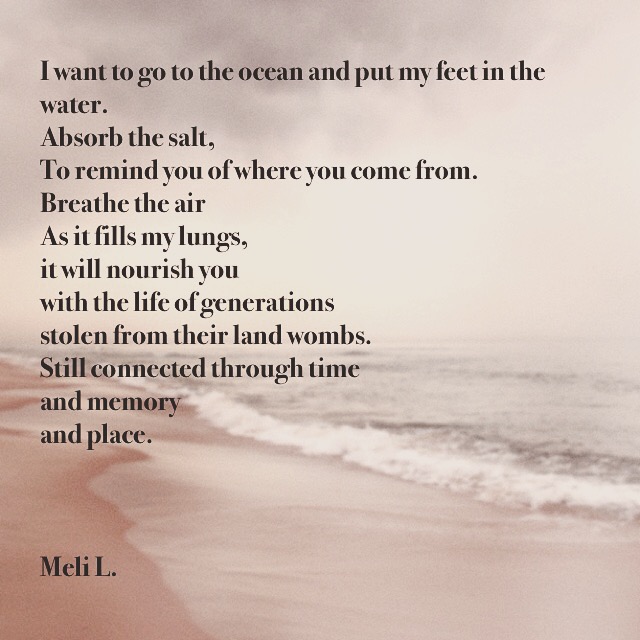Take your time!
Don't move too fast. The most precious moments happen in the slow transitions.
Scholarly Gangsta
Please don't take my kindness for weakness.
I'm a scholar and a gangster.
I will kill you with facts and research.
I will be the expert on your life and go to conferences
and create discourse about your actions.
My homies will come by your house and throw 20 page articles at your door.
You will become a bullet point on my CV.
Partial Review of the film "Rhymes for Young Ghouls"
Published in Comparative Education Review - University of Chicago Press.
As a California (Esselen) Indian woman and educator, I was enthralled with this film, especially with its protagonist, Aila, played by 19 year old Mohawk actress, Kawennahere Devery Jacobs. Aila represents everything that is true about Native women. She is strong, independent, and organically intellectual. Jacob’s ability to “be” Aila is not merely because of her acting ability, but because she is a Mohawk woman and is reenacting a story that is true for the members of her own family. This is significant because it makes the movie with a fictional plot seem autobiographical. One scene in particular resonated with me as a powerful metaphor for Native women, no matter what tribe or ethnicity. In this scene, Aila is taken into the residential school and her hair is forcibly cut by the nuns. She cries tears, not only mourning for her loss of hair, but for generations upon generations of indigenous North Americans who were oppressed. Aila chooses to fight rather than run away. She looks after her family members even when it seems like they are not looking after her. She draws pictures of an Indian warrior on a horse, the same hero that her mother drew before her death. This hero woman represents her mother. It represents all Indian women and without ever realizing it, Aila is transformed into this hero. In the film Aila speaks her tribal language, she knows her culture and she embraces it even though the non-Indian viewer may not be able to see it. In a flashback with her mom, a young Aila doesn’t understand why they are painting a headdress on an Indian when Mi’gMaq people didn’t wear headdresses. Her mother tells her “some people think it looks powerful.” Aila questions why that is and her mother tells her because they are “dumbasses.” Aila gets hit and gets up time after time. Aila is my cousin, my mother, and my sister. Aila is me. “Rhymes for Young Ghouls” is a film that embraces and highlights everything that it means to be Indian, the good and the bad. The main character teaches young women to be fierce, to be bold, and that by trying to forget, we only create new memories that are even more powerful than the old.
And they continue to exterminate us...
Is Deejaying an art?
“I definitely consider it an art. It’s almost like I’m slowly painting a picture with every record I play. Each song represents a different stroke of color. Just like a painter expresses his/herself through their paintings, I do the same through music. Dictating people’s movements, getting a reaction from my audience from the different records I play means a lot to me, especially when I see that everyone is having fun. I have the opportunity to make an individual who may have had a bad day or week happy for a brief moment, whether it be for several minutes or several hours. That’s important to me being that I’m a person who likes to help others. I’m not a civil rights activist, a politician, or even a good public speaker, but music is my medium to get through to others." EchoSlim (DJ TK)
Soon to be published chapter in Hip Hop and the Law...an abstract
“Tupac and Native American Studies: Creating Connections through Linguistics, Historical Activism, and Photography”
His name calls us to remember an endangered language. Tupac Amaru – Quechua words. Many people know what these words mean and who he is named after but do not understand that the use of the words is powerful. Indigenous communities continue to fight to keep their languages alive, to revitalize them, to wake them up from sleeping. When Afeni named her son Tupac Amaru, she taught us all Quechua.
His words are insightful. Creating provoking thoughts and ideas, sometimes violent but grounded in a history of resistance. This resistance didn’t begin when Tupac was born but grew throughout Afeni’s life and was transmitted to her children. Afeni’s thoughts and experience with resistance didn’t begin with the Black Panther Party but with witnessing the Lumbee defeat the KKK.
His image is penetrating. His eyes reach the widest of audiences. A viewer can’t help but feel his pain, passion, and commitment, never captured any more real than by Cree Photographer Ernie Paniccioli. Paniccioli created a small, but compelling archive of photographs of Tupac that deserve viewer appreciation. A Native American vision of Tupac Amaru Shakur.
This chapter intends to introduce the ways in which Tupac Amaru Shakur is connected to the interdisciplinary program of Native American Studies. It is my academic attempt to relate Tupac to indigenous epistemologies, historical frameworks, and visual archives. Tupac is/was not just a rapper who Native American youth could idolize or relate to but a person who exemplified decolonization through resistance, through a powerful voice, and through an image that is unforgettable. It will focus on the significance of his name (not just the translation but what it means to have an indigenous name), an event that marked a moment in Afeni’s life when she witnessed resistance for the first time and how that moment played out in Tupac’s life, and finally an introduction of the photographic archive of Tupac by Native American photographer Ernie Paniccioli.
Native Hip Hop...a snippet
Hip Hop tells the story of people who have faced severe trauma, poverty, marginalization, genocide, slavery, and colonization and have survived it with a sense of dignity and pride. Native Hip Hop artists use Hip Hop in many ways but, more often than not, they use Hip Hop as a means to re-claim their history, heal themselves and others and remember the strength of their people through informing society with their asumpa. (Asumpa…to flow, to float, to fly. As in water, air, words, and sounds)


